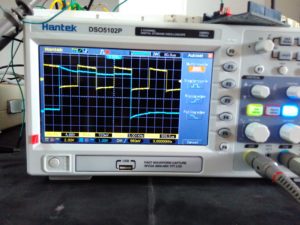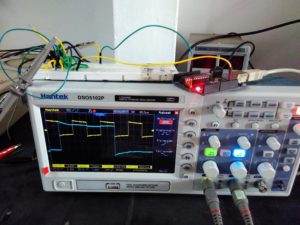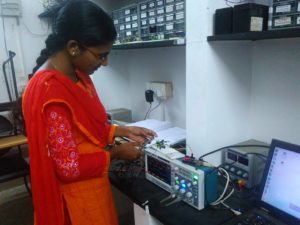– Logeshwari
In electronics, initially I displayed my name using Seven Segment Display(SSD). I had already posted that in My First Blog. After that I wanted to learn more on SSD. So I was asked to make a digital clock. I have completed the first digit of the seconds. I used two JK flip flops (HD74LS76A), decoder (SN74LS47), a SSD (Common Anode) and Signal Generator. I first made the connections of JK flip flop on a breadboard. The input is clock signal which is generated from a signal generator of Frequency 1Hz. The combination of the two flip flops acts like a counter. Once the circuit is connected, I tested the output of the flip flop using an ocilloscope. I got the waveforms like this.
 |
 |
 |
 |
Then I took the decoder and connected the outputs to the input pins of the decoder. Decoder (converts the binary information to 2n outputs) is connected to the seven segment display. While doing decoder I was able to recall Karnaugh-Map which is the logic behind it. The output of the decoder is fed to the seven segment display. Once everything is done then it counts from zero to fifteen (f-represented in binary).
Since the one’s digit of the clock counts only upto nine and after that it should reset to zero. For resettting the digit to zero I used NAND gate. Binary representation of nine is 1001. When the Most Significant Bit and the Least Significant Bit are high(1) then it should reset to zero.
I have completed the first step only, but I feel happy that I learnt and understood what I did. I acknowledge Sanjeev, Sundhar and Ranjith for guiding me.

